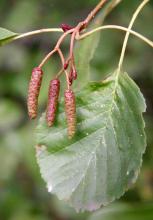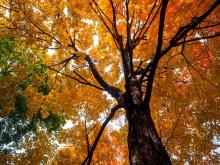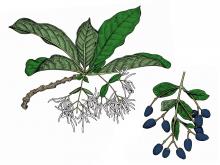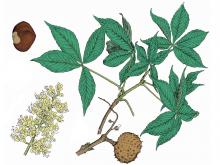Trees, Shrubs and Woody Vines
Media

Species Types
Scientific Name
Quercus rubra
Description
Northern red oak is a favorite for planting in streets and parks and is one of the most widespread and commercially important of the oaks.
Media

Species Types
Scientific Name
Prunus serotina
Description
Black cherry is prized for its high-quality wood. With its rich red color, it is easy to machine and holds its shape well. Eastern tent caterpillars like black cherry as well, spinning “tents” or bags on the branches for protection while they feed on the leaves.
Media

Species Types
Scientific Name
Alnus glutinosa
Description
Native to Europe and Asia, European, or black alder is planted widely as an ornamental. In some parts of the United States and elsewhere in the world, this species becomes weedy, even invasive. In Missouri, you are most likely to encounter it in landscaped areas, and not in the wild.
Media

Species Types
Scientific Name
Ulmus spp.
Description
Missouri has seven species of elms that grow in natural settings. Elms have tough, shock-resistant wood. In the past, some species were favorite shade trees, which is why so many towns have Elm Streets. But elms have suffered for a century from a devastating fungal disease.
Media

Species Types
Scientific Name
Fraxinus spp.
Description
Missouri has six species of ashes that you might find in natural settings. They have been very popular as shade trees, and their wood is famously useful. Ash trees of all the species in North America are currently being killed by the invasive, nonnative emerald ash borer.
Media

Species Types
Scientific Name
Acer spp.
Description
Missouri has five species of maples that are either native or naturalized, plus several that are known only in cultivation. Maples are important members of native ecosystems. They also provide stunning fall color, welcome shade in summer, commercially important lumber, and sap for syrup.
Media

Species Types
Scientific Name
Chionanthus virginicus
Description
White fringe tree is a shrub or small tree that is native to southwest and southeast Missouri. Its fragrant, showy clusters of white, drooping, fringe-like flowers make it a popular for landscaping.
Media

Species Types
Scientific Name
Aesculus pavia
Description
Red buckeye and Ohio buckeye are both found in Missouri. You can distinguish red buckeye by its having usually 5 leaflets (not 7), its red (not greenish-yellow) flowers, and the absence of any spines on its fruit hulls. Although both buckeyes are cultivated statewide, red buckeye grows in the wild only in our southeastern counties.
Media

Species Types
Scientific Name
Aesculus glabra
Description
Ohio buckeye is one of the first trees to leaf out in spring, and its palmately compound leaves make it look somewhat coarse textured. But most of all, buckeyes are known for buckeyes! People often carry these shiny brown seeds in their pockets for luck.
See Also
About Trees, Shrubs and Woody Vines in Missouri
There are no sharp dividing lines between trees, shrubs, and woody vines, or even between woody and nonwoody plants. “Wood” is a type of tissue made of cellulose and lignin that many plants develop as they mature — whether they are “woody” or not. Trees are woody plants over 13 feet tall with a single trunk. Shrubs are less than 13 feet tall, with multiple stems. Vines require support or else sprawl over the ground.





















